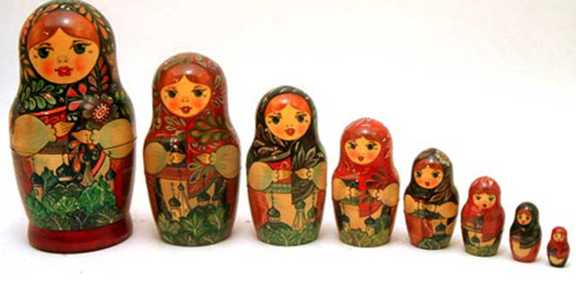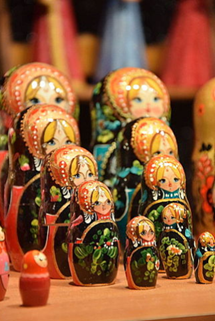What Are Nesting Dolls and Their Cultural Significance?
- 213
- 98
What Are Nesting Dolls and Their Cultural Significance?
- By huawei-accessories.com
- 18/02/2025
What are nesting dolls? Nesting dolls, also known as Matryoshka dolls, are intricate pieces of art that hold much more than meets the eye. These painted wooden figures, each smaller than the last, are nestled within each other. Originating from Russia, these dolls have a fascinating history and are steeped in cultural symbolism. We’ll delve into the craftsmanship behind their creation, their journey through history, and their impact on cultures worldwide. Whether you’re a collector, history enthusiast, or simply curious about these unique artefacts, this guide will offer comprehensive insights into the world of nesting dolls.

What Are Nesting Dolls?
Definition and Basic Structure
Nesting dolls, or Matryoshka dolls, are a set of wooden dolls decreasing in size placed one inside the other. The term “Matryoshka” is derived from the Latin root “mater,” meaning “mother,” reflective of the doll’s representation of motherhood and family. Typically, the outermost doll is the largest and can be as simple or ornate as desired, with each subsequent doll fitting snugly inside the previous one down to the smallest, sometimes no bigger than a grain of rice.
Variations and Types
Nesting dolls come in various styles and themes, extending beyond the traditional Russian peasant woman. Variations include political figures, famous characters from folklore, animals, or even modern pop culture icons. Each set is unique, reflecting the creativity and intention of its maker. Collectors can find nesting dolls that range from classical depictions to innovative interpretations that push the boundaries of traditional norms.
The Origins and History of Nesting Dolls
Early Inspirations and Creation
The concept of nesting objects dates back centuries, with roots in ancient Chinese and Japanese art. However, the first Russian nesting doll appeared in the 1890s. The artist Sergey Malyutin, drawing inspiration from Japanese nesting dolls, enlisted the help of a skilled craftsman, Vasily Zvyozdochkin, to create the first Matryoshka. These original dolls portrayed a traditional Russian family, embodying the spirit of rural life and craftsmanship.
Evolution Over Time
As the popularity of nesting dolls grew, so did their diversity and complexity. The early 20th century saw an explosion of themes, ranging from political satire to representations of famous literary characters. Soviet-era artists used nesting dolls for propaganda, creating sets that depicted ideological themes. Post-Soviet times allowed for more creative freedom, with modern artists exploring abstract and expressive designs, thus preserving the craft while continually evolving its artistic reach.
Cultural Significance of Nesting Dolls
Symbolism in Russian Culture
Nesting dolls are more than mere decorative pieces; they embody deep cultural symbolism. In Russian culture, they represent fertility, motherhood, and the deep bond within families. The largest doll often symbolizes the nurturing mother, with smaller dolls inside representing her children. This depiction underscores the importance of family unity and the cyclical nature of life. Additionally, the craftsmanship involved reflects traditional Russian artistry and values.
Global Influence and Adaptations
While rooted in Russian folklore, nesting dolls have resonated globally, inspiring artists worldwide. Countries such as Japan and China have adopted and adapted the concept, blending it with their native cultural elements. Nesting dolls have also found a place in contemporary art, with modern materials and themes keeping the tradition alive. This global influence highlights the universal appeal and adaptability of nesting dolls, transcending cultural boundaries and becoming a beloved piece of art worldwide.
How Are Nesting Dolls Made?
Materials and Craftsmanship
Traditionally, nesting dolls are carved from wood, specifically from Linden or Birch trees. The wood is seasoned to achieve the perfect balance of flexibility and durability. Skilled craftsmen, known as toymakers, use a lathe to shape each doll before the intricate process of nesting them begins. Precision carving ensures each doll fits perfectly within the larger one.
Artistic Techniques and Designs
Once carved, the surface of each doll is meticulously sanded and primed for painting. Artists use gouache or tempera paints to detail the features and patterns. The painting techniques vary, from simple and bold to highly intricate designs. Each finished set is a testament to the artist’s skill and creativity, often signed and dated for authenticity.

Conclusion
Nesting dolls continue to mesmerize people with their beauty, intricate craftsmanship, and profound symbolism. But what are nesting dolls, exactly? They represent not just a piece of Russian culture but a universal symbol of family, tradition, and artistic endeavor. As we explored their origins, crafting, and global impact, it’s evident that these dolls are timeless treasures that bridge generations and cultures.
FAQ
What materials are traditionally used to make nesting dolls?
Nesting dolls are traditionally made from the wood of Linden or Birch trees. The wood is chosen for its durability and ease of carving, ensuring the dolls are sturdy yet perfectly hollowed to nest within each other.
How did nesting dolls become a symbol of Russian culture?
Nesting dolls became a symbol of Russian culture due to their deep familial representation and roots in rural Russian life. They symbolize motherhood, fertility, and the household, embodying significant cultural values passed down through generations.
Are there modern interpretations of nesting dolls in today’s art?
Yes, modern artists continually reinterpret nesting dolls, exploring contemporary themes and innovative materials. These modern interpretations keep the tradition alive, making nesting dolls relevant to today’s art and culture while preserving their historical essence.





![[VLOG interlocking report] Try the combination of Manfrotto's Nitro Tech 608 and iFootage's TC6 [VLOG interlocking report] Try the combination of Manfrotto's Nitro Tech 608 and iFootage's TC6](https://website-google-hk.oss-cn-hongkong.aliyuncs.com/drawing/article_results_9/2022/3/25/278166fcc7181b73dd99af1b87fd6482_0.jpeg)









